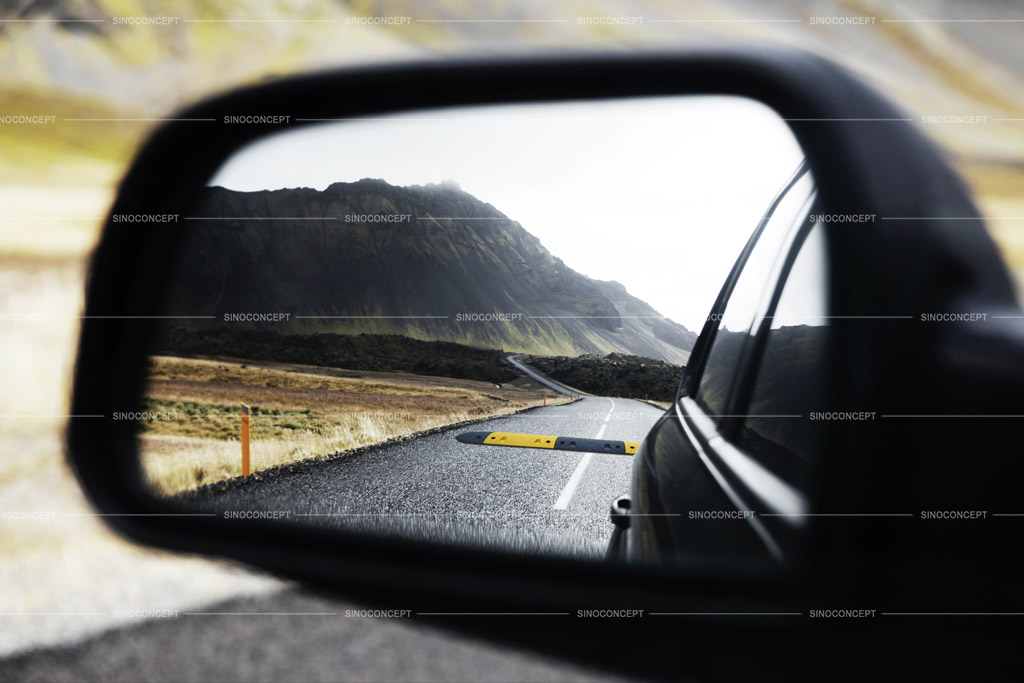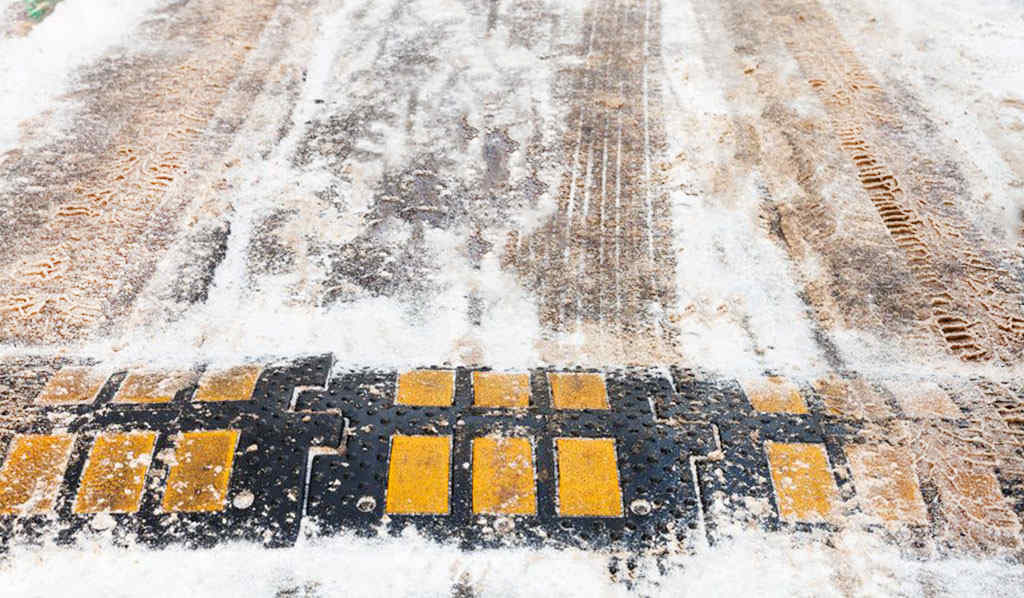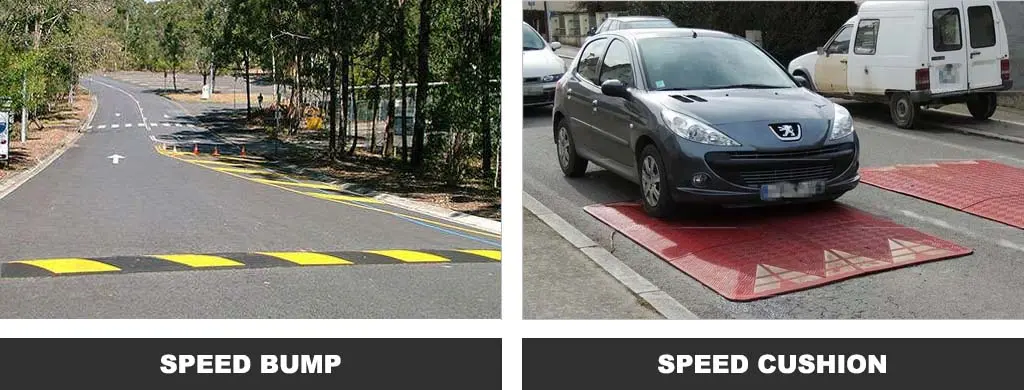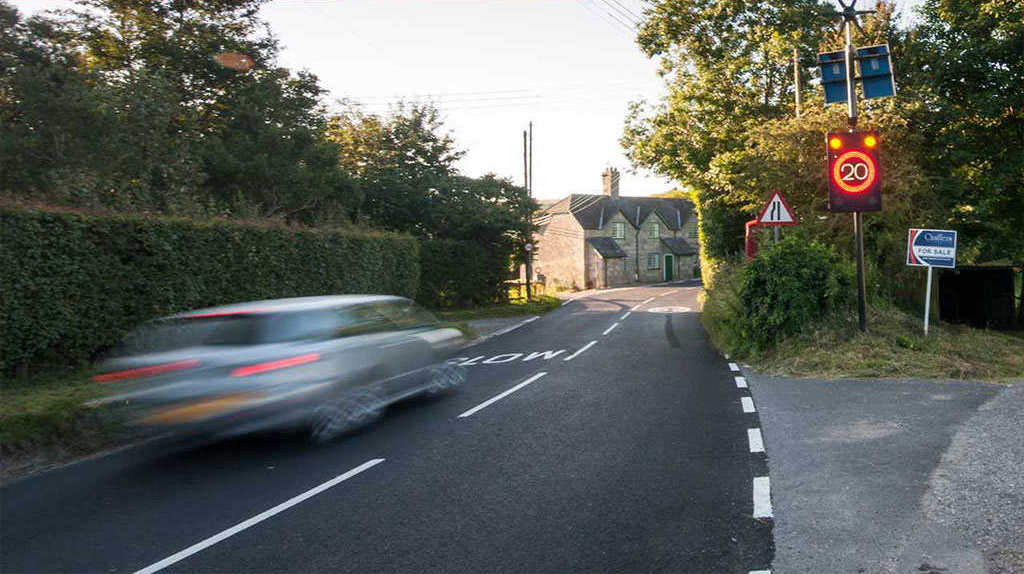Discover the pros and cons of speed bumps!
Imagine you wake up late for your work, and you start to rush through your schedule. You are accelerating your vehicle to its limit because you fear that you’ll be late for a meeting. Suddenly, you cross a certain hindrance on the road, and it causes a screeching sound in your vehicle.
You look back through your rear-view mirror and realize that it’s a speed bump. Now, you regret speeding above the limit because it can potentially damage your vehicle.
Well, one of the main aims of speed bumps is to discourage drivers from driving fast. Speed bumps are the most common traffic calming measures. The role of speed bumps is very important.
Generally, there are two calming traffic techniques, i.e., vertical deflection and horizontal deflection. Vertical deflection includes all the speed bumps and various types, while horizontal deflections involve creating diversions and reshaping roads to control traffic. Both play a vital role in traffic management.
Do you want to know more about this topic? We also have an article talking about the role of speed bumps.


Discover here our full range of Rubber Speed Bumps!
Top five benefits of speed bumps
The need for speed bumps grew as companies started to develop fast automobiles. These automobiles posed a danger to the general public and pedestrians. There were cases of fatal injuries and accidents.
Therefore, one of the profound ways to ensure pedestrian safety was through the installation of speed bumps. However, there are other benefits of speed bumps which are as follows:
- The first benefit is clear: reduce accidents on roads. It helps in reducing accidents by reducing the dynamic speed of vehicles. Reduction in speed helps pedestrians cross the roads without any difficulty or fear.
Therefore, there are fewer cases of fatalities, collisions, and crashes. According to one report, speed bumps are very successful in fulfilling this prime agenda. - Another useful benefit of speed bumps is that they help to control traffic and divert them to other streets. Suppose you’re driving at a fast speed and notice a speed bump ahead; you’ll most probably turn to a different street.
This is the most common practice of motorists, and this can help in traffic control. Consider a private place like a neighbourhood, school zone, and parking lot. Fast speed is not desirable in these areas.
Installing speed bumps may cause drivers to divert to different roads and reduce traffic congestion and discomfort. Besides, speed bumps are generally more effective than speed-limit signs. A driver will usually ignore and continue driving at reckless speed until hit with a speed bump. - Since there has been a transition to rubber speed bumps, they are quite easy to install. Now, there’s no need to hire a construction specialist who’ll mould the asphalt and create a speed bump.
There are kits of rubber speed bumps that come with instructions. Anyone can simply install it using bolts. They’re also cost-effective and can be replaced easily.
- The new speed ramps are quite environmentally friendly because of their material. Previously, there was difficulty in spotting these speed bumps. Fortunately, now there are reflective stripes on road bumps and cat eyes, which helps to spot them easily.
The markings are usually yellow and white stripes. They are becoming more prevalent in parking lots. Reducing their speed can help avoid collisions with pedestrians.
Moreover, cars can skid during winter periods, which can cause serious damage. Rubber speed bumps can avoid this and ensure drivers’ as well as pedestrians’ safety.

You have already read a good part of this article, 👀
We've
got the impression that you like it. 🙂
👇🏻
IF YOU ARE LOOKING TO WORK DIRECTLY WITH A MANUFACTURER,
FEEL FREE TO CONTACT US. WE ARE VERY HAPPY TO HELP!
Essential problems with speed bumps
While speed bumps may appear as saviours, they generally have several disastrous problems.
Some problems with speed bumps are as follows:
- They can increase traffic noise and possibly air pollution. Noise pollution can increase due to the vibration impact of large SUV vehicles. However, it depends upon the vehicle’s type. Some may generate huge traffic noise, while others may cause negligible noise.
This can be disturbing for neighbourhoods and city streets as they can impact the lives of residents. Therefore, many property owners are against their installation in several areas. Moving on, they can even raise air pollution due to the constant acceleration and deceleration, which increases the toxic fumes in the air.
- Speed bumps may also damage your vehicles. If you cross a speed bump unnoticed, there can be wear and tear to your vehicle. Most commonly, it can lead to tire and suspension damage.
It may compress the suspension from the adverse impact of the speed bumps. Sometimes, these speed bumps might cause the power steering to leak fluids. Therefore, it can have eternal damage to vehicles.
- Speed bumps may even cause trouble for emergency vehicles. According to several sources, emergency vehicles might face delays that can raise future impediments and emergencies. Fortunately, speed cushions are one solution that can allow these vehicles to pass without any hindrance.

Get to know some history of speed bumps
The first-ever speed bump dates back to 1906 in New Jersey when an automobile reached 30 miles per hour (mph). At that time, it was a basic concept, but in 1953, it was reintroduced as a calming traffic measure by Arthur Holly.
Speed bumps made their way in Europe during the 1970s, and the first speed bump came to Britain in 1983.
The initial speed bumps were mainly made of concrete and asphalt material. Transportation engineers came up with new ways, and there was the advent of recycled plastic and rubber speed bumps.
These new speed bumps were more flexible and environmentally friendly. Besides, transportation departments also designed several other types of vertical deflection devices.
Some of the most famous variants and designs of speed bumps are as follows:
- Speed Humps: They are similar to speed bumps, but they are shorter in height than traditional speed bumps. They cause a rocking motion in vehicles that cross them and can generally impact speeding vehicles.
- Speed tables: These are midblock traffic management tools that are generally longer in length than speed bumps but shorter in height. They will raise the entire wheelbase of vehicles and lower their speed.
- Speed cushions: These speed breakers are carefully planned tools that have gaps that allow emergency vehicles with large wheelbases, like fire trucks, police vehicles, and ambulances, to cross without any hindrance. These are effective because they won’t delay the timings for emergencies.

What are the other traffic calming measures?
So far, we have seen vertical deflection devices for speed bumps, transportation engineers leave no step unturned and have designed horizontal deflection systems to reduce huge traffic.
Horizontal deflections are designs for roads and crossings that can further ensure traffic control. Authorities like Vision Zero and the Federal Highway Administration implement these measures to provide traffic control across many jurisdictions and municipalities.
Some of them are as follows:
- Sidewalk extensions are one way to increase space for amenities like benches and streetlights while reducing space for vehicles. There can also be zebra crossings, crosswalks, pavement markings, and roundabouts for traffic regulation.
- Lane adjustments involve narrowing the roads so that drivers might slow down.
- Neckdowns are a great way to narrow roads. They often incorporate curb extensions which reduce the lane for vehicles. Chicanes are another form of neckdown that are in series. It makes it difficult for drivers to drive past the series, which enables speed reduction.
- Bollards are another way to avoid vehicles speeding in pedestrian zones. Medians and boulevards involve creating new middle areas, which reduce traffic from opposing lanes. They can have fences around which can protect pedestrians.
- There can be diverters that can act as bike lanes and allow a cyclist to cross easily.
- Police enforcement can install various signages for awareness, including speed limit signs, road signs, stop signs, and speed signs. The enforcement might even use strict measures like speeding tickets, fines, and warning signs.

Conclusion
Both the vertical and horizontal deflection systems ensure smooth traffic functioning. Still, transportation engineers are always on the lookout for improving road design, enhancing current traffic calming techniques, and supporting society.
Speed bumps always remain to be one of the profound ways to reduce traffic and control speed. They are important in city streets to avoid clashes between the residents. While they can pose some threats, the transportation department is finding new ways to satisfy all the stakeholders.
Do you want to have peace of mind while crossing the street without looking left or right? Or do you want to be in constant anxiety that a vehicle will hit you? You’ll probably ignore the latter situation. Therefore, play your part and install a speed bump in your street and feel safe.
You can get top-quality rubber speed bumps exclusively from Sino Concept.
👇🏻
IF YOU ARE LOOKING TO WORK DIRECTLY WITH A MANUFACTURER,
FEEL FREE TO CONTACT US. WE ARE VERY HAPPY TO HELP!




















